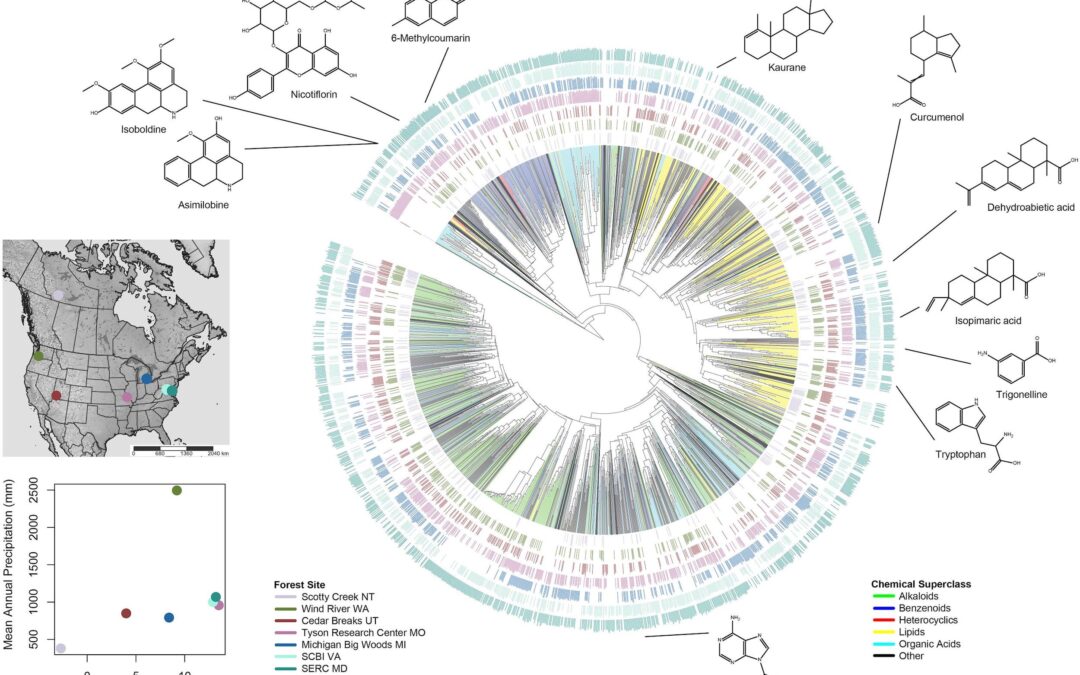Emily, Joe, Marko, Jonathan, and colleagues in the Forest Global Earth Observatory (ForestGEO) network publish a paper in Frontiers in Ecology and Evolution titled “Chemical similarity of co-occurring trees decreases with precipitation and temperature in North American forests”. The paper is part of a collection of invited contributions on the topic of “Temporal and Large-Scale Spatial Patterns of Plant Diversity and Diversification“. Thanks to Brian Sedio for leading this project!
Figure: Hierarchical dendrogram of 13,480 foliar metabolites. Qemistree (Tripathi et al., 2021) represents the structural similarity of unique metabolites in the form of a “phylogeny,” a hierarchical dendrogram in which structurally related metabolites form sister pairs and clades. Branch color indicates the chemotaxonomic classification of the metabolite in one of five major chemical superclasses; black branches represent all other chemical classes. Colored interior branches represent branches for which all “descendent” branches were classified as the same superclass. Seven concentric bar plots represent the relative log ion intensity of metabolites in each of seven forest plots. The geographic location of each forest plot, mean annual precipitation (mm), and mean annual temperature (C) are indicated in the inset (Figure credit: Brian Sedio).

